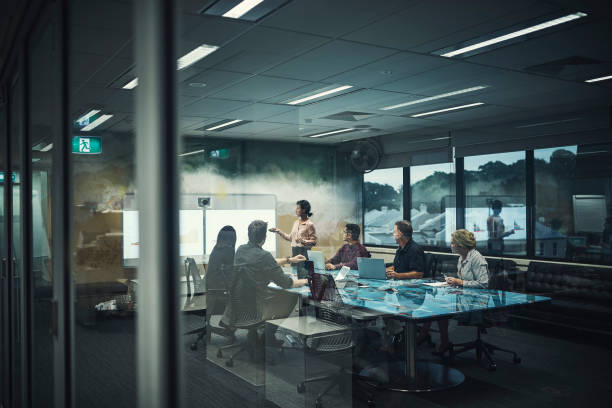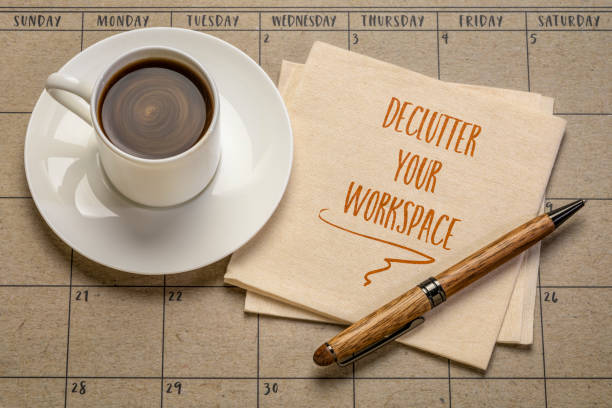Learn how to optimize your work environment for productivity and well-being

Work Setting: The Foundation of Productive Endeavors
Regardless of their occupation, every worker knows the value of a proper work setting. It’s the unsung hero behind every successful project, every cleared deadline, and often, every innovative idea. But what makes a work setting truly exceptional? Let’s delve deeper.
The Evolution of Work Settings
Ever wondered how we transitioned from tight cubicles to the expansive open spaces of today? The journey has been remarkable, indeed.
From Cubicles to Open Spaces
The 1980s saw a cubicle-dominated workspace, with each employee having their own small personal space. The intention? Minimise distractions. However, with time, we realised the essence of collaboration, leading to the advent of open spaces. By breaking barriers, these settings enhanced teamwork and unified the workforce.
Rise of Remote Work

Fast forward to the digital age, and remote work settings have come to the forefront, thanks in part to the recent global situations. Home offices, co-working spaces, and virtual settings have gained prominence, offering flexibility and redefining the term ‘work setting’ altogether.
Psychology Behind a Productive Workspace
The design and layout of a workspace play a pivotal role in influencing employee psychology.
Power of Colors
Did you know that blue hues are believed to enhance cognitive skills, while green can spark creativity? Making sure to choose the rights shades for your office can immensely affect employee mood and productivity.
Role of Lighting
A well-lit room not only reduces eye strain but also keeps employees alert. Embracing natural lighting can significantly improve mental well-being.
Nurturing Creativity & Innovation
Flexible Spaces
Spaces that can be adapted or reconfigured allow teams to brainstorm, collaborate, and innovate more efficiently. Moveable furniture or partition systems can help in achieving this dynamism.
Incorporating Nature
Introducing plants, aquariums, or even just nature-themed artworks can ignite creativity. Nature has a calming effect and can provide the much-needed relaxation in a hectic work setting.
Health and Well-being in the Work Setting
Ergonomics
It’s crucial to invest in ergonomically designed furniture. Chairs with proper lumbar support, adjustable heights, and sit-stand desks can prevent a slew of health issues.
Break and Recreation Areas

Having spaces for employees to relax, take a break, or even engage in recreational activities is essential.
Tools & Tech: Upgrading the Work Setting
Smart Desks
Desks equipped with charging points, adjustable heights, and even AI-integrations are the future of workspaces.
Tech Integrations
As the saying goes, “Spend money to earn money”, there many important tools that a company needs to spend money on. From high-speed internet to tools and software’s, making sure that every employee have access to these tools is no longer a luxury, but is a necessity.
Optimising Spaces for Collaboration
Soundproof Rooms
For those crucial meetings or brainstorming sessions, soundproof rooms can provide the ideal environment, free from external disturbances.
Interactive Whiteboards
These are not your regular whiteboards. These boards are used to do a myriad of things, from presentations to video conferencing.
Work Setting for Remote Teams
Virtual Office Tools
In the age of remote work, tools like Slack, Zoom, or Trello have become essential in replicating the office environment virtually.
Home Office Essentials
Having access to the right tools in your home office, such as high quality webcam, and noise cancelling headphones, is essential for creating a productive work setting.
Making the Most of Limited Spaces
Space-saving Furniture
Furniture that can be folded, stacked, or even wall-mounted can help maximise space in smaller work settings.
Decluttering

A clutter-free environment often equates to a clutter-free mind. Regularly tidying up and organising your workspace can lead to enhanced efficiency.
Sustainability in the Work Setting
Green Materials
Using sustainable materials in office design not only reduces the carbon footprint but also promotes a healthier environment.
Energy-efficient Practices
From using LED lights to motion-sensored utilities, adopting energy-efficient practices is the need of the hour.
FAQs
– Why is the work setting essential?
A conducive work setting directly impacts productivity, creativity, and well-being, ensuring optimal results and a happy workforce.
– How often should one revamp their work setting?
Ideally, assessing and making minor changes every year can keep the work setting fresh and aligned with evolving needs.
– Are open spaces better than cubicles?
Both have their pros and cons. While open spaces promote collaboration, cubicles offer privacy. The choice depends on the nature of the job and individual preferences.
– How can one make a home office as productive as a regular office?
By equipping it with essential tools, ensuring good internet connectivity, and setting clear boundaries to avoid distractions.
– Do colours really impact productivity in a work setting?
Yes, colours can influence mood, cognition, and creativity. Hence, choosing the right colour palette is crucial.
– Is remote work setting the future?
While remote work offers flexibility, the future might see a hybrid model combining the best of both worlds.
Conclusion
A work setting is more than having a clean and clutter free work area. Its the reflection of a company’s culture, belief’s, and principles. A conducive environment can fuel creativity, boost morale, and pave the way for success. As we progress in our careers, its essential to make sure that our workplace matches our objectives, well-being and efficiency.
External Links/ Sources:
6 TYPES OF WORK ENVIRONMENTS (WITH EXAMPLES)
